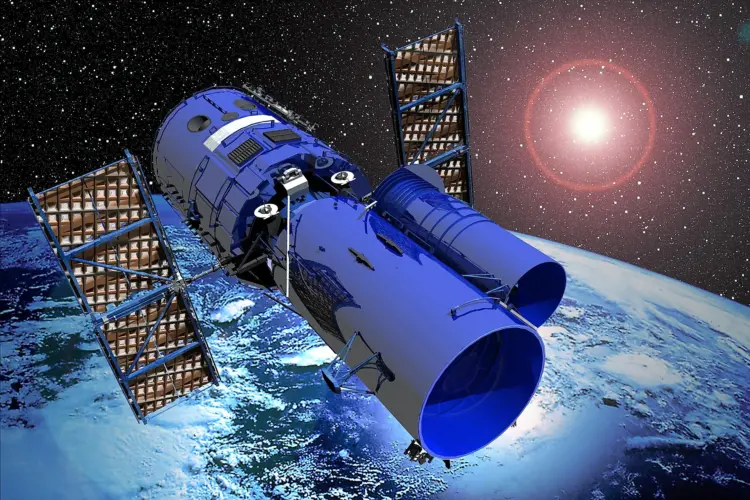The Hubble Space Telescope has been one of humanity’s most remarkable achievements in the exploration of the cosmos. Launched into orbit in 1990, Hubble has provided us with an unprecedented view of the universe, capturing stunning images and data that have reshaped our understanding of space. From distant galaxies to the birth of stars, the telescope’s ability to capture the invisible and reveal the awe-inspiring beauty of space has made it a beacon for scientific discovery. In this article, we will take a visual journey through the wonders of the Hubble Telescope, exploring its history, the incredible images it has captured, and its ongoing contributions to science.
A Historic Milestone in Space Exploration
When the Hubble Space Telescope was launched into orbit aboard the Space Shuttle Discovery in 1990, it marked a new era in astronomical research. Unlike ground-based telescopes, Hubble is positioned far above Earth’s atmosphere, allowing it to avoid the interference of clouds, pollution, and atmospheric distortion. This unique vantage point enables Hubble to capture images with extraordinary clarity and detail. Since its launch, the telescope has provided scientists and the public with breathtaking views of the cosmos, transforming the way we perceive space.
The telescope’s design was groundbreaking, incorporating a 2.4-meter mirror that allows it to observe the universe in both visible and infrared light. Hubble’s instruments have enabled the study of phenomena like dark matter, the expansion of the universe, and the formation of planetary systems. Its legacy has become inseparable from the advances in astrophysics that followed its deployment, making it one of the most important tools for astronomers around the world.
Hubble’s Iconic Images: A Window into the Universe
One of the most captivating aspects of the Hubble Telescope is the mesmerizing images it has produced over the years. These images often look like works of art, but they are the result of meticulous scientific observation. Some of the most iconic images include the Pillars of Creation, a stellar nursery where new stars are born, and the Eagle Nebula, a region of space teeming with stellar activity.
Another famous image captured by Hubble is the Hubble Deep Field, a long-exposure photograph that reveals thousands of galaxies, some of which are billions of light-years away. This image provided a profound look at the vastness of the universe and our place within it. Through Hubble’s lens, we have seen the intricate beauty of galaxies colliding, the explosion of supernovae, and the ethereal glow of distant planets, all of which have expanded our understanding of the universe’s complexity.
Contributions to Scientific Knowledge
Beyond its ability to produce stunning visuals, the Hubble Telescope has contributed immensely to scientific knowledge. For example, Hubble’s observations have played a pivotal role in determining the rate of expansion of the universe, leading to the discovery of dark energy, an invisible force that drives the accelerated expansion of the cosmos. Additionally, Hubble has helped scientists study the atmospheres of exoplanets, providing vital clues about the potential for life beyond Earth.
Moreover, Hubble has allowed researchers to measure the age of the universe, which is now estimated to be approximately 13.8 billion years old. It has also helped in identifying the presence of black holes in distant galaxies, unraveling some of the most mysterious phenomena in space. With its wide range of capabilities, Hubble continues to be a crucial tool for advancing our knowledge of the cosmos.
The Telescope’s Legacy and the Future
As the Hubble Space Telescope approaches the end of its operational life, its legacy remains secure in the annals of scientific discovery. While the James Webb Space Telescope, launched in December 2021, promises to continue Hubble’s mission with even greater sensitivity and depth, Hubble will always hold a special place in the history of space exploration. Its images and discoveries have inspired generations of scientists, students, and the general public to look up in wonder and curiosity.
For those looking for a gift that inspires wonder, science lovers may find that models, prints, or even educational experiences related to Hubble make for perfect Christmas gifts. The telescope’s images have become iconic symbols of human achievement, and their accessibility means that anyone can connect with the marvels of space. Whether it’s a deep dive into a Hubble photograph or a piece of Hubble-inspired artwork, the spirit of exploration that the telescope embodies continues to captivate hearts around the world.
Conclusion
The Hubble Space Telescope has changed the way we view the universe, providing awe-inspiring images and invaluable scientific insights. Its contribution to space exploration is immeasurable, and its legacy will continue to shape the future of astronomy for generations to come. From its stunning imagery to its groundbreaking discoveries, the Hubble Telescope remains a testament to human curiosity, ingenuity, and the relentless pursuit of knowledge. As we continue to explore the cosmos, Hubble’s wonders will forever remind us of the vastness and beauty of the universe that surrounds us.
















